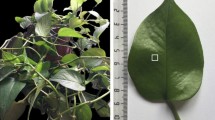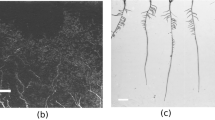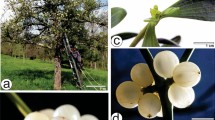Abstract
To be able to stain the nuclear structures by a simple method, so that the chromosomes are stained intensely against a clear background, in a relatively short period of time is an advantage for a biologist especially involved in mutation studies, when numerous preparations are to be made for comparative study of the morphology of the chromosomes1.
This is a preview of subscription content, access via your institution
Access options
Subscribe to this journal
Receive 51 print issues and online access
$199.00 per year
only $3.90 per issue
Buy this article
- Purchase on Springer Link
- Instant access to full article PDF
Prices may be subject to local taxes which are calculated during checkout
Similar content being viewed by others
References
Amirkhanian, J. D. (unpublished results).
Stewart, W. N., and Schertiger, Ann M., Stain Tech., 24, 39 (1949).
Greep, Roy O., Textbook of Histology (The Blakiston Co., Inc.).
Author information
Authors and Affiliations
Rights and permissions
About this article
Cite this article
AMIRKHANIAN, J. Cresyl Violet as a Stain for Root Tip Smears. Nature 201, 319–320 (1964). https://doi.org/10.1038/201319a0
Issue Date:
DOI: https://doi.org/10.1038/201319a0
This article is cited by
-
Brilliant Cresyl Blue as a Stain for Plant Chromosomes
Nature (1965)
Comments
By submitting a comment you agree to abide by our Terms and Community Guidelines. If you find something abusive or that does not comply with our terms or guidelines please flag it as inappropriate.



